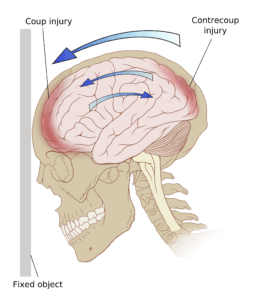Texas law provides a path for victims to seek financial compensation when someone is injured due to another person's negligence. Whether you were hurt in a car accident, slipped and fell on someone’s […]
Traumatic brain injuries are quite complex and can lead to serious disabilities. There is no one symptom that is the same for every person, not even those who may have developed a TBI for similar reasons. The quality of treatment for these types of injuries has been greatly improved, but effective early treatment is still the best hope for success.

Traumatic brain injury (TBI) is a somewhat-common injury, but may be missed in its early stages while the medical team focuses on life-saving measures. At one time, the mortality rate for individuals with TBI was very high, but medical advances (such as respirators) and the ability to decrease intracranial pressure have dramatically improved those odds. In spite of these advancements, there are still substantial negative effects from a TBI.
TBIs can be broken down into two categories:
Individuals who suffer from severe brain injuries may remain in unresponsive states for quite some time. Many people require long-term rehabilitation in order to maximize their ability to function and work toward functional independence.
There are several different causes of traumatic brain injuries, including car accidents, falls, concussions, and other types of head injuries. Those at the highest risk for TBI are the elderly and young adults. There is no "cure" for TBI, but the best approach is to seek appropriate treatment through a reputable rehab facility or doctor.
When a patient with a TBI begins the rehabilitation process, the goal is to:
The patient will receive therapy every day, and may require the assistance of staff for even simple tasks such as brushing teeth, eating, and getting up. Staff may also need to monitor the patient for safety reasons. The rehabilitation will consist of both a physical therapist and an occupational therapist.
The amount of improvement the patient makes depends on the severity of the injuries. Some patients make a nearly full recovery while others require modifications to their homes in order to resume some measure of a normal life.
Along with a team of researchers, Dr. Robert Rennaker (the head of Bioengineering at UT Dallas) has developed two new tools to assist victims of brain injuries called Targeted Plasticity Therapy. This type of therapy focuses on stimulating a damaged brain's functions using eye-scanning goggles to detect efficiency, as well as an implantable microchip that helps with regaining memory. While this type of therapy may not be available just yet, Rennaker said he's hoping for full FDA approval on the two devices in 2017.
Note: The information that was utilized in this post was gathered from the use of secondary sources. This information used has not been confirmed or independently verified. If you locate any information that is not correct, please contact our firm as soon as possible so that we can make the appropriate corrections. If you find any information that is false, we will remove or correct the post immediately after it is brought to our attention.
Disclaimer: As a valued member of the Dallas community, Rasansky Law Firm’s goal is to improve the safety of all residents in the great state of Texas. These posts should not be viewed as a solicitation for business and the information included herein should not be taken as medical or legal advice. The photos used in this post are not representative of the actual crash scene.
Over 30+ Years Of Personal Injury Experience
Top-Rated and Award-Winning Personal Injury Lawyers
Attorneys Available to Discuss Your Case Now
No Fee Unless You Win
Free Confidential Consultation.
Fill out the form below to receive a free and confidential initial consultation with an experienced personal injury lawyer.